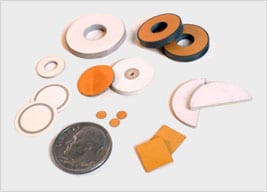Question
Will my accelerometer's sensitivity decrease over time?
Answer
This is a common question without a one-size-fits-all answer, but here are some guidelines.

Most Endevco accelerometers use ferroelectric ceramic crystals for sensing elements. Ferroelectric ceramics offer design flexibility, such as the ability to maintain tight tolerances and produce complex shapes while controlling the orientation of the sensitive axis, and their properties can be tailored to meet specific requirements through compositional and process engineering. Endevco develops and manufactures custom ferroelectric ceramics for our piezoelectric transducers.
Ferroelectric ceramics, by their nature, exhibit a slight, consistent decay in sensitivity over time, commonly referred to as the "aging rate" and typically expressed in percent change per year. To minimize the effect on accelerometer performance, Endevco ceramics are subjected to an extensive stabilization process following polarization, which accelerates the natural aging of the ferroelectric ceramic material to the point where sensitivity loss is virtually undetectable.
As a rule of thumb, an accelerometer using ferroelectric crystals will experience a loss in sensitivity of less than 0.5% per year. In most cases, the sensitivity change is not discernable based on units returned to Endevco (for calibration) over a period of time.
There are exceptions to the above rule-of-thumb that must be taken into consideration. If the accelerometer was exposed to excessive heat or high shock levels, reductions in sensitivity are possible. These environmental conditions and mishandling may not only cause sensitivity reduction, but could cause permanent damage to the sensor.
Keep in mind that the above rule applies for ferroelectric ceramic crystals. Quartz will exhibit better stability, but due to its limitations in size, shape and direction of polarization, quartz is generally limited to specialized applications. The above rule is applicable to Endevco's products since design, process methods, material composition and quality levels will differ between producers. To ensure accurate measurements, annual calibration is always recommended, regardless of crystal material or manufacturer.